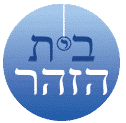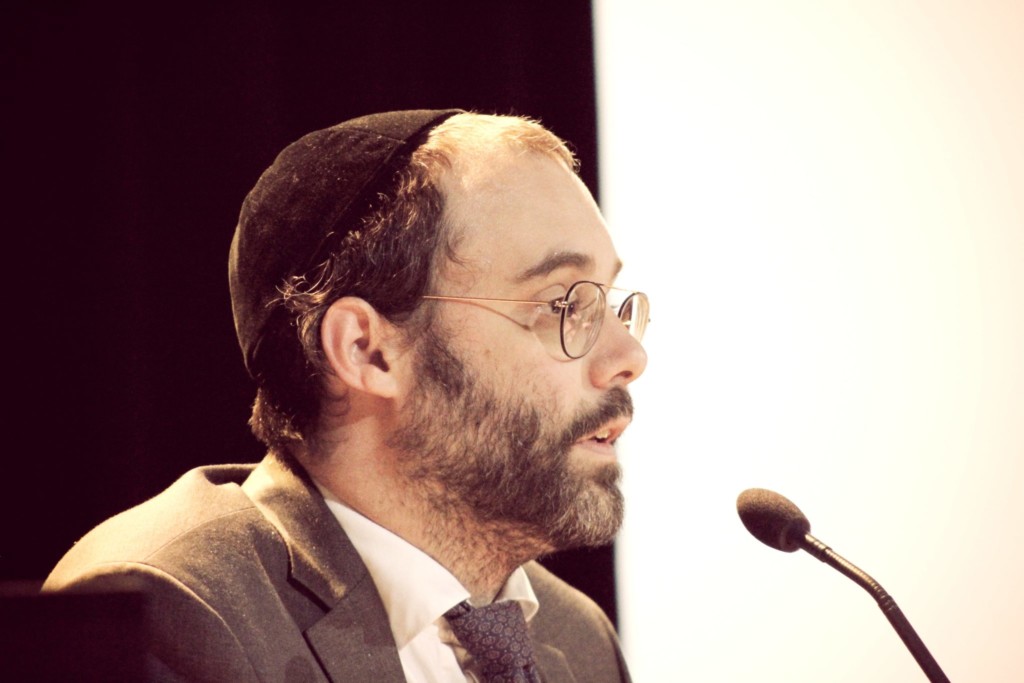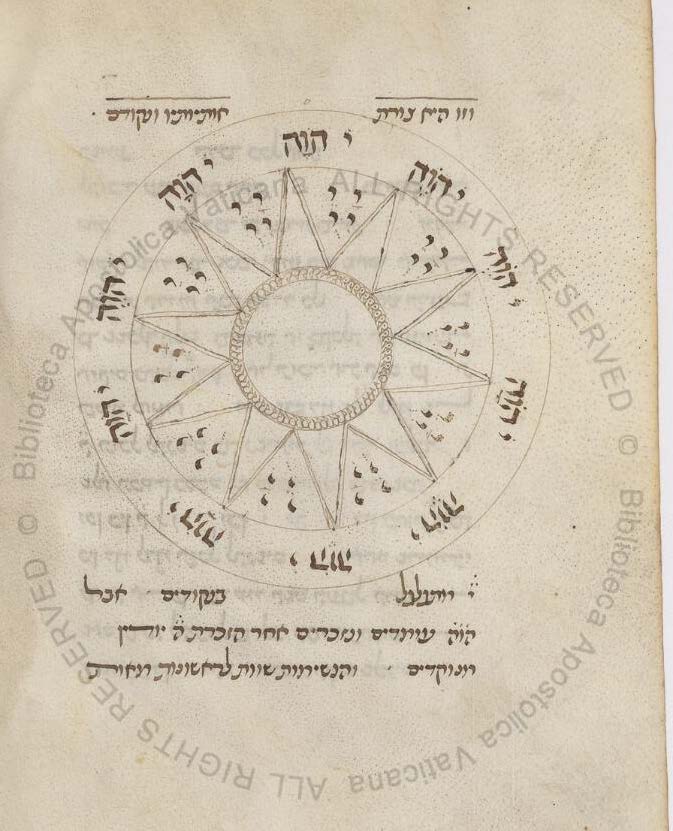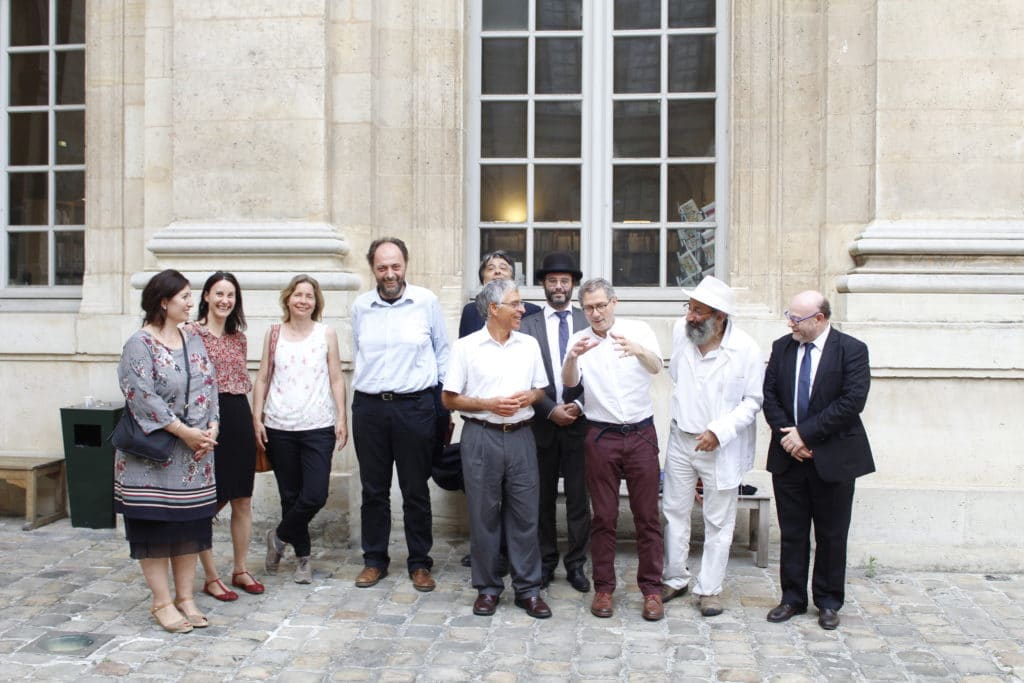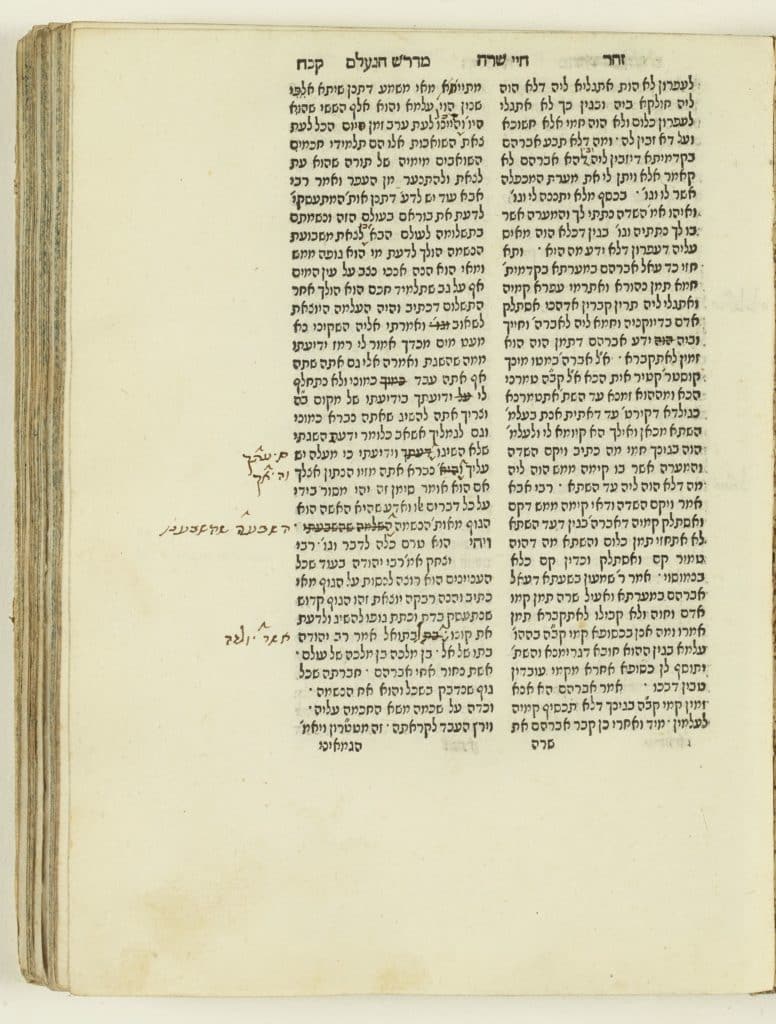Cette publication est également disponible en :
Français
The text of the standard edition of The Zohar, that of Vilna (1895), sometimes differs significantly from that of the original Mantua edition. We will take a specific example of such differences, retrace its origin and highlight the debates to which it has given rise.1The main body of this presentation is taken from Yosef Avivi’s monumental work, Qabbalat ha-Ari (Makhon Ben-Tsvi, Jerusalem, 2008), vol. III, p. 1120-1129, courtesy of the author. .
The Mantua Zohar in Safed
Firstly, one should point out that it was the Mantua edition and not the competing Cremona edition that was mainly distributed to the cabalists of Safed, as well as in Italy. As Yosef Avivi1 points out;2 Yosef Avivi, Qabbalat Ha – Ari , op . cit ., flight. I, p. 253, n. 104. ; the Cremona edition was mainly distributed in Germany and Poland. There are variants between these two editions. As R. Moshe Zacuto (1625-1697) wrote to his correspondent R. Shimshon Baqi: “It is not appropriate to base oneself on the“ Big Zohar ” [l’édition de Crémone], but only on the “Little Zohar ” [l’édition de Mantoue], on the one hand because the first one is almost impossible to find here, on the other hand because it is full of mistakes and the emendations of the Rav’s [R. Isaac Luria] that I published under the title Derekh Emet don’t allow us to remedy them, as the paginations don’t match; and in any case, there are so many typos in the “Grand” that it’s impossible to correct them all.3 Mr. Zacuto, Iggerot ha-Ramaz , Livorno, 1790, 2a (ed. Ha-Ḥayyim we-ha-Shalom, Jerusalem, 1999 p. 5).. “
As far as I know, we have no absolute certainty that the cabalists of Safed had a copy of the printed edition of the Zohar in their hands, although the opposite would be surprising: for the record, the Mantua edition dates from……. , even though R. Moshe Cordovero died in , R. Isaac Luria arrived in Safed that same year and R. Moshe Cordovero, like R. Joseph Caro and many others, was in close contact with Italy, especially for the printing of his own works. It is certain in any case that R. Ḥayyim Vital (1542-1620) used it for his drafting of the Lurianic corpus, since it incorporates in his texts the pagination references of the Zohar of Mantua4 See, for example, the facsimile of a manuscript in Sha’ar ha-Ma’amarim , Ahavat
Shalom, 2017, p.473 473..
How R. Isaac Luria Studied The Zohar
To summarize here the contribution of R. Isaac Luria to Kabbala, meaning to the understanding of the Zohar, would be a challenge. However Yosef Avivi has highlighted the interest in studying the Lurianic Kabbal not only in its systematic formatting that characterizes the most studied texts, such as the ‘Ets Ḥayyim , from several layers of elaboration by the different links of the Lurianic tradition – R. Ḥayyim Vital, R. Shmu’el Vital, R. Ya’aqov Tsemaḥ, R. Me’ir Poppers -, but by retracing the method of study by R. Isaac Luria, which always starts from a text of the Zohar, and by following the chronological order of his rare writings and teachings, in order to observe the genesis of new ideas.
R. Issac Luria himself writes5 In Sha’ar Ma’amarei Rashbi , Jerusalem 1959, 22a. that his essential contribution is the reading of the ten sefirot, not, like R. Moshe Cordovero, according to a three-level scheme – Arikh Anpin , Ze’ir Anpin and Nuqva -, but according to a five-level scheme – Arikh Anpin , Abba , Imma, Ze’ir Anpin and Nuqva – and that this new paradigm stems from a careful comparative reading of the two most obscure parts of the Zohar, the Idra Rabba and the Idra Zutta. What essentially emerges from this new paradigm is a finer distinction between what Ze’ir Anpin receives from Arikh Anpin and what he gets from Abba and Imma in terms of “supplements of being”, which he calls moḥin , “Brains”.
However the Idra Zutta is essentially devoted to these questions, and we shall see that the Lurianic contribution had the effect of introducing “corrections” into the text of this Idra Zutta .
From Mantua to Vilna
In the Mantua edition (vol. III, 291a), the Zohar refers to “heir” ( yeruta ) of Ze’ir Anpin in the following terms :
הני ירותא דאבוי ואימיה ירית. מאי ירותא דא עטרין דהוו גניזין בגוויהו ואחסינו לבן דא מסטרא דאבוי הוה גניז בגוויה חד עטרא דאקרי חסד ומסטרא דאימא חד עטרא דאקרי גבירה וברוי לוי וי וי וי וי וי וי י
תפילין דרישא וכלא נטיל בן דא וירית כלא
Behold, he inherits the inheritance from his father and mother. What is this inheritance? These are the tiaras that were hidden in them and which they passed on as an inheritance to this son: on his father’s side was hidden in him a tiara called ḥessedand on the mother’s side a diadem called gevura all come to crown his head and he unifies them. And when the father and the mother cast their light upon him, all are called “ tefillin of the head ”and the son inherits the whole thing.
The Cremona edition bears exactly the same text, and this is also the lesson learned by Daniel Matt in his critical edition of the text of the Zohar , based on existing manuscripts5. On the other hand, the Vilna edition (1895), which is the basis for all contemporary editions, has a slightly different text, with the addition of four words:
הני ירותא דאבוי ואימיה ירית. מאי ירותא דא אחסנתא דאבוי ואימיה ותרין
… בגוויהו גניזין דהוו עטרין
Behold, he inherits the inheritance from his father and mother. What is this inheritance? It’s the legacy of his father and mother and the two tiaras that were hidden inside them …
The history of this modification must take into account that, in the Mantua edition already, the Zohar quotes itself, three pages later, in this way III, 292b):
בחללא דגלגלתא נהירין תלת נהורין ואי תימא תלת ארבע אינון כמה דאמינא אחסנתא דאבוי ואימיה תורין גניזין דילהון דמתעטרין כלהו ברישיה ואילון תפי
“In the cranial cavity shine three lights; what if you say “three?
but they are four of them, as we have said: the legacy of his father and his mother and their two hidden things all of which come to crown his head and are the “ tefillin of the head”… “
From R. Moshe Cordovero to R. Isaac Luria
It is difficult to explain, in this short contribution, what is at stake in these complex passages. Nevertheless; Let us try. The task of the Zohar is to match three levels of reality: the sefirotic level, where Ze’ir Anpin , the “Son” – which corresponds, to put it briefly, to the sefira Tif ‘ eret – receives a double influx from Abba , the “Father”, the sefira Ḥokhma , and from Imma , the “Mother”, the sefira bina ; the anatomical level, where the receptacles of these impulses must correspond to the ” three cavities of the skull ”(roughly speaking the left and right brains, as well as the cerebellum); and the halachic level, where these impulses “emerge” in the form of the four compartments of the tefillin of the head, which correspond to the four moḥin Ḥokhma , Bina , Ḥessed and Gevura (or rather the roots of Ḥessed and Gevura which are in Da’at). How do you go from two to four? The first text seems to only speak of only two dimensions: the tiara of ḥessed and the tiara of gevura , which would be identified as inheritance ( yeruta ) of Abba and Imma, while the second text speaks on the one hand of the legacy(aḥsanta) of Abba and Imma and, on the other, of two “hidden things”.
R. Moshe Cordovero, in his monumental commentary on the Zohar, Or Yaqar , scrupulously follows the lesson of Mantua and solves the problem in the following way: “the inheritance” or “legacy” of Abba and Imma are indeed the tiaras of ḥessed and of gevura which are in Da’at, according to the simple meaning of the text6 Mr. Cordovero, Zohar ‘im perush Or Yaqar, Jerusalem, 2003, vol. 22, p. 74-75., while “the two hidden things” are “the ḥokhma and the bina which are hidden and which complete them in their place, as has been explained7 Id . p. 115. “.
R. Isaac Luria, in his autograph commentary on another cryptic text of the Zohar on the same themes, the Sifra di-Tsni’uta , follows the same approach: “And this Son inherits the legacy of his father and his mother, who are the two tiaras which were hidden in Abba and Imma and which he now inherits, as found in the Idra Zutta 8In Y. Avivi, Qabbalat ha-Ari, flight. II, p. 996. The entirety of this commentary is given a critical edition which covers pages 947-1009. . We know that this commentary was composed early, before R. Isaac Luria came to teach in Safed. His definitive teaching offers a very different reading: on the one hand there is “the two moḥin of ḥokhma and bina … who are called in the IdraZutta (292b) “the legacy (aḥsanta) of his father and mother”…”, and on the other hand “the two moḥin that together form Da’at, which we call ḥessed and gevurawhich are called “the two diadems”, as the text says: “the legacy of his father and mother and their two hidden things”. “It should be noted that the expression:” the two tiaras “( trin ‘iṭrin ) does not appear in 292b, but only in 291a; it is imported here, in order to unify the two passages in a reading that is the opposite of the one received previously. R. Isaac Luria highlights the difference between yeruta , “Inheritance”, and aḥsanta , “Legacy”, to affirm that the “legacy of Abba and Imma » evoked in 292b corresponds to moḥin of ḥokhma and bina, while “the two hidden things” of 292b are identical to the “two hidden diadems” of 291a and correspond to the moḥin of ḥessed and gevura. These do not strictly speaking come from Abba and Imma , they only transit through them.
The version that we have in the current editions, אחסנתא דא ירותא מאי בגוויהו גניזין דהוו עטרין ותרין ואימיה דאבוי, is therefore a collage between the Mantua version, בגוויהו גניזין דהוו עטרוו דאיזין דהוו רותא דאיזין דהוו עטרותא דא and what is said in the same edition further, גניזין תורין ואימיה דאבוי אחסנתא דאמינא כמה, based on the Lurianic reading of this text. How did it come to integrate the very text of the Zohar?
From Constantinople to Amsterdam and Livorno
As Daniel Abrams explained, the Mantua edition, althoughif it served as a basis for the work of the cabalists of Safed, was not considered by them as the definitive edition. R. Abraham Azulay (1570-1643), disciple of R. Moshe Cordovero, already notes that “the textual variants of the Zohar are more numerous than for any other book” and he compiles in his work Or ha-Levana all these variants on the basis of “ancient and precise manuscripts, works by R. Moshe Cordovero, a book from Egypt established from the glosses of R. Isaac Luria of which is said that he had six old manuscripts , and finally the Hebrew translation carried out by R. Israel Ankaoua9 RA Azulay, Or ha-Ḥama , Jerusalem, 1876, vol. I, p. III. “. Unfortunately, the only printed edition of Or ha-Levana covers only the first volume of The Zohar, so I am not in a position to say which version of our passage this book proposes to retain.
A “corrected” edition of the Zohar appeared in Constantinople in 1743. Its publisher, R. Yona b; R. Ya’aqov, writes in his introduction: “” God heard me and sent me this copy of the Zohar abandoned in a corner, brought from Aleppo, corrected letter after letter, word after word, from the copy of R. Ḥayyim Vital while he was residing in Damascus … Rav Moshe Mizraḥi writes that he devoted the years 1618-1663 to establish these corrections from copies of R. Ḥayyim Vital and R. Yehuda Mish’an, as well as those of R. Israel Benyamin, R. Menaḥem di Lonzano, R. Abraham Galante and the Sages of Jerusalem… ”It is in this edition that the version דא ירותא מאי בגוויה גניזין דהוו עטרין ותרין ואימיה דאבוי אחסנתא appears for the first time, which therefore comes from the annotated copy of R. Ḥayyim Vital himself
It is impossible for us, however, to determine the precise intention of this annotation: was it a correction to be made to the text itself, as the editor of the Constantinople Zohar understood it, or rather an explanatory gloss ? Impossible to know. Moreover, this problem is not specific to the Zohar, but runs through the entire history of publishing and philology. 10The reference work for the Hebrew book is Y. Sh. Spiegel, ‘ Amudim be-Toldot ha-Sefer ha-‘Ivri, flight. II, Hagahot u-magihim , Ramat-Gan, Bar-Ilan University Press, 2nd edition, 2005..
The inclusion of these glosses in the Constantinople edition did not meet with unanimous approval among the later editors, who were at the same time leading cabalists. R. Shalom Buzaglo (c. 1700-1780), author of Miqdash Melekh , a reference Lurianic commentary of the Zohar, published in Amsterdam in 1793 an edition of the Zohar in which he criticized the introduction of these glosses in the text itself; for his own text, he practically returned to the Mantua edition. He just adds the word “two” בגוויה גניזין דהוו עטרין תרין דא ירותא מאי – which was already the case, but only as a marginal gloss, in the edition published in Amsterdam in 1715, between that of Mantua and that of Constantinople therefore. But this addition does not change the meaning of the text.
Another immense contemporary cabalist, R. Ḥayyim Yosef David Azulay (1724-1806), considers the criticisms made by R. Shalom Buzaglo to be unjustified, and above all llegitimate, and publishes in Livorno in 1793 a vocalized edition of the Zohar which takes up the text of Constantinople. This position was also adopted by the publishers of Vilna in 1895, as well as the publishers of Zhitamir in 1863 and Izmir in 1876. before it. Finally, let us point out the 1858 edition of Livorno, by Moshe Yesha’yah Tubiana, which incorporates both the marginal comments of R. Ḥayyim Yosef David Azulay as well as his introduction, as the commentary by R. Moshe Zacuto and the Miqdash Melekh by R. Shalom Buzaglo – an edition that is intended to be quite “complete”, therefore – presents a variant that we have not seen attested elsewhere:
מאי ירותא דא אחסנתא דאבוי ואימיה תרין עטרין דהוו גניזין בגוויהו …
“What is this legacy? It’s the legacy of his father and mother, the two tiaras that were hidden inside them… ”
This edition takes up the Constantinople variant , but just skips the waw before trin , so that that one no longer has “the legacy of his father and mother and the two tiaras ”but only“ the legacy of his father and mother, the two tiaras ”, which is in the sense of the Mantua edition…
Conclusion
The stakes of using to old editions of the Zohar, particularly the Mantua edition,are therefore high. This is the edition in relation to which the kabalists of Safed, R. Moshe Cordovero and R. Isaac Luria in particular, were necessarily led to position themselves. The fact that in his commentary on Sifra di-Tsni’uta, R. Isaac Luria follows the obviousness of the Mantua lesson , shows that the reading which he will later adopt does not result from the choice of another version, on the basis of a manuscript which would be unknown to us, but from a hermeneutical work within the text of the Zohar as presented to us in the Mantua edition. The work of the later publishers, at least in part, in harmonizing the text of the Zohar, on the basis of the marginal glosses of the first pupils of R. Isaac Luria’s, in a way that makes the Lurianic interpretation more immediate. This work is necessarily at the expense of a correct understanding of both the non-Lurianic commentaries of the Zohar and of the exegetical approach of R. Isaac Luria himself. This state of affairs is not specific to the Zohar: the Babylonian Talmud has also been corrected according to the variants that Rashi proposed to retain, which means that today, when Rashi tells us that ” we must retain the variant b “and our text already has the variant bwe no longer have access to the a that Rashi had before his eyes, and thus the problems he was confronted with; fortunately the Tossafot often come to defend this variant a and allow us to grasp the exegetical implications of these differences. The same is true in the present insistance
